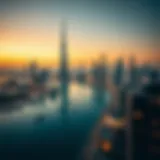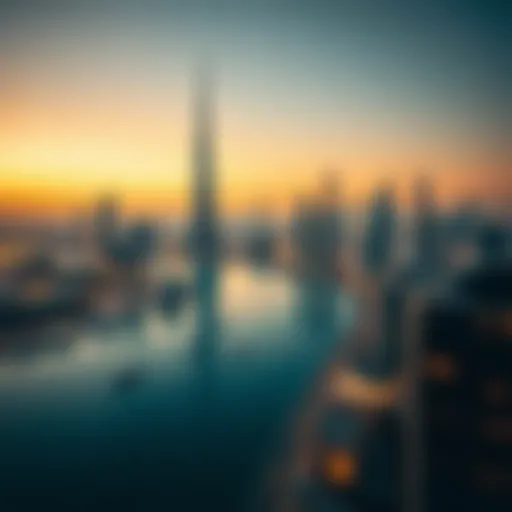Discovering Souk Al Marfa: Dubai's Market Treasure
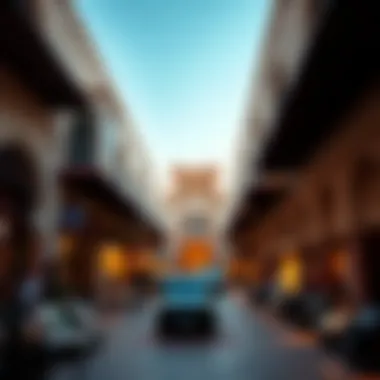
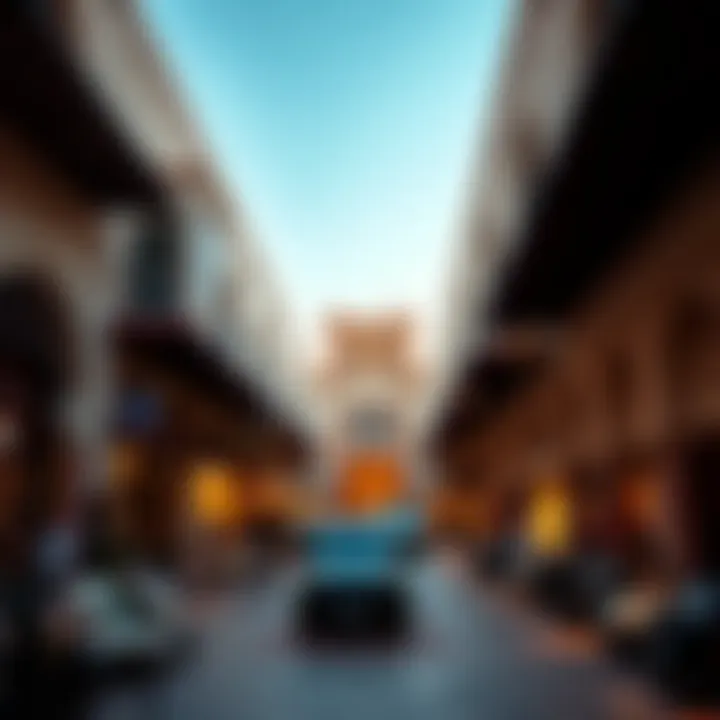
Intro
Nestled in the heart of the Deira Islands, Souk Al Marfa has emerged as a vibrant embodiment of Dubai's rich cultural heritage and modern development. This marketplace is not just a place for trade; it serves as a connecting point for locals and visitors, where history, architecture, and enterprise converge in seamless harmony.
As we venture deeper into Souk Al Marfa, we’ll peel back layers of its past and present, unveiling the architectural marvels that define its character and the diverse offerings that attract a mixed crowd. It’s a sight to behold, beckoning investors, homeowners, expats, and tourists alike. This journey promises to reveal why Souk Al Marfa is more than just a shopping destination; it’s a vital component of Dubai's ongoing urban narrative.
In this exploration, we will touch on key aspects including market trends, investment strategies, and the cultural significance of the souk in relation to the broader landscape of Dubai's real estate and tourism sectors. Whether you're considering a business endeavor, eyeing a property investment, or simply curious about the cultural mélange that defines this hub, there’s something for everyone here.
Let’s dive in and uncover the essence of Souk Al Marfa, a gateway that welcomes exploration and opportunity.
Historical Context of Souk Al Marfa
Understanding the historical context of Souk Al Marfa is like peeling an onion—there's more than meets the eye, and each layer reveals insights into not only the souk itself but also the wider tapestry of Dubai's development. This area stands as a living testament to cultural convergence, economic growth, and the solid foundation upon which modern Dubai has been built.
The Foundation of Deira Islands
Deira Islands, where Souk Al Marfa nestles, wasn't just an arbitrary development project; it marks a significant turning point for the City of Gold. Established purposefully to enhance Dubai’s waterfront and bolster its position as a global trade hub, the island development features ambitious plans that reflect the forward-thinking ethos of the emirate. As the sun set on one of the oldest trading routes, the foundation of Deira Islands began to rise, accompanied by aspirations that mirrored the rich legacy of Dubai as a bustling marketplace.
Historically, Deira has played a pivotal role in Dubai’s emergence as a trade center since the 19th century. Merchants from far and wide found common ground here, exchanging pearls, spices, and textiles. Today, Souk Al Marfa inherits this spirit, inviting not only trade but also community interaction and cultural exchange.
The Evolution of Souk Culture in Dubai
Souks in Dubai have not remained static—they’ve transformed through time, adapting to the needs of a rapidly changing society. The roots of souk culture can be traced back to the desert bazaars where bartering was the norm, echoing stories of trade routes that traversed the Middle East. As the population swelled and globalization seeped into the fabric of everyday life, Dubai's souks, including the illustrious Souk Al Marfa, started to embrace a broader marketplace culture.
With the growth of tourism and the influx of expatriates, there emerged a blending of diverse cultures which is vividly reflected in Souk Al Marfa. The souk does not merely showcase traditional goods; it responds to consumer demands, incorporating a variety of international products and gourmet food options that cater to cosmopolitan tastes.
- Rich flavors from Middle Eastern cuisine fill the air,
- Artisanal products reflect the craftsmanship of local artisans,
- A wealth of retail choices foster a unique shopping experience.
This evolution encapsulates a broader narrative: Souk Al Marfa stands as a symbol of heritage and progress, where the old meets the new amidst the lively market chatter and vibrant stalls.
"Souk culture in Dubai is not just about commerce; it's about community."
In an era characterized by digital transactions and online shopping, Souk Al Marfa serves as a counterpoint—a tactile experience where visitors can feel the texture of textiles and savor the aroma of spices. This context underscores why the historical backdrop is so significant; it informs not only what the souk is today but also what it aspires to become regarding community and culture, standing tall against the tide of modernization.
Architectural Design of Souk Al Marfa
The architectural design of Souk Al Marfa plays an essential role in shaping the experience of both visitors and locals. This area not only reflects Dubai's unique culture but also serves practical purposes for commerce and community engagement. Through the lens of architectural elements, one can discern the intention behind its creation and the benefits it brings to the Deira Islands.
From the moment one steps into Souk Al Marfa, a distinct blend of modern and traditional aesthetics is apparent. The careful selection of materials that echo the history of the Emirate, such as stone, wood, and intricate tile work, sets the stage for an immersive experience. Visitors are invited to engage with the architecture, where the design speaks volumes about its environmental and social consciousness. For investors and developers, understanding this architectural vision is fundamental.
Contemporary Meets Traditional Design
Souk Al Marfa emerges as a bridge between past and present. The design embraces contemporary innovations while honoring the traditional souk structure favored by locals for centuries. High ceilings and open spaces allow for a flow of natural light, evoking a sense of tranquility amidst the hustle and bustle of marketplace activity. This thoughtful architecture draws people in, creating an inviting atmosphere.
"Architecture is the thoughtful making of space." - Louis Kahn
An essential aspect of this convergence is the layout itself. Stalls are designed to mimic the classical souk arrangement, promoting interaction among vendors and visitors. The winding pathways encourage exploration and discovery, reminiscent of older market styles, yet they integrate cutting-edge design elements like smart lighting and sustainability features. For those investing in real estate, this design creates opportunities to leverage the charm of tradition while reaping the benefits of modern functionality.
Sustainability in Architecture
Sustainability is a pressing concern in today's urban environments. It is a cornerstone of Souk Al Marfa's architectural vision. This market not only showcases products but also demonstrates a commitment to environmentally friendly practices. Use of solar panels for energy, rainwater harvesting systems, and efficient waste management underscore this commitment. Such initiatives appeal to ecologically conscious investors, adding to the growing appeal of the region.
The commitment to sustainability also reflects on how spaces are used. Public areas are designed to accommodate large foot traffic, encouraging social interaction and community gatherings. Additionally, the integration of green spaces within the market enhances air quality and offers a respite for residents and tourists alike. This thoughtful blend of sustainability and design prompts local businesses to consider how their operations can align with these values, ultimately boosting the market's reputation.
In summary, the architectural design of Souk Al Marfa demonstrates a meaningful fusion of contemporary and traditional elements, while prioritizing sustainability. The importance of this design cannot be understated; it resonates through the marketplace's function and cultural relevance. For investors and stakeholders, recognizing the potential of this approach is vital to navigating the evolving landscape of the Deira Islands.
Commercial Offerings at Souk Al Marfa
The commercial offerings at Souk Al Marfa cater to a diverse array of tastes and preferences, making it an essential hub within the Deira Islands context. Its blend of retail, culinary, and artisan experiences is designed not just to attract shoppers but to foster a unique connection to Emirati culture and local entrepreneurship. Engaging with these offerings enriches the understanding of Deira Islands’ developmental narrative that goes beyond mere transactions.
Retail and Local Products
Souk Al Marfa presents a vibrant tapestry of retail options that draw on the area's rich heritage while accommodating modern consumer demands. Shoppers can find an extensive range of local products, from spices to textiles, showcasing the diverse flavors and craftsmanship of the region.
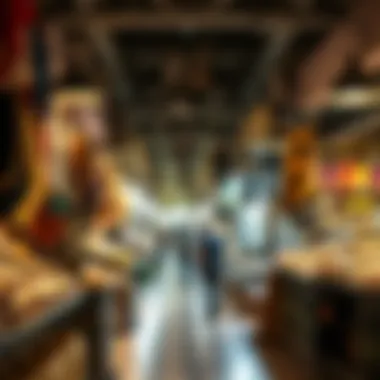
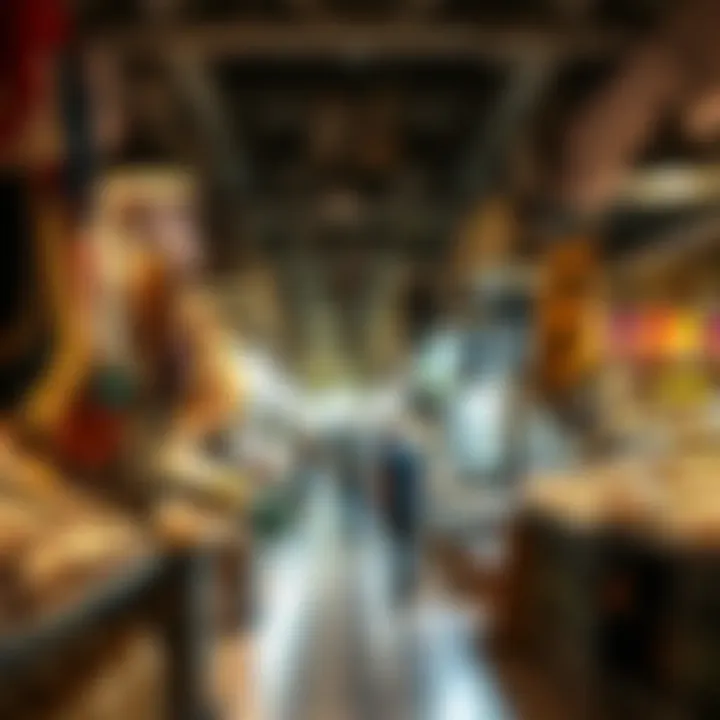
Some highlights include:
- Traditional Spices: The fragrant aroma of saffron, cardamom, and za'atar wafts through the air, beckoning customers to explore.
- Handwoven Fabrics: Unique pieces reflect the artistry passed down through generations, making them more than just products but pieces of cultural history.
Local artisans often set up vendor stalls, selling handmade goods that tell stories of their origins. This personal touch adds value to each purchase, fostering a sense of community and encouraging visitors to take home a piece of the culture.
Culinary Experiences
The culinary offerings at Souk Al Marfa are an invitation to embark on a cultural journey through food. A wide array of dining options reflects the multicultural fabric of Dubai.
Key experiences include:
- Street Food Stalls: Serving freshly prepared shawarma, falafel, and biryani that tantalize the taste buds of newcomers and locals alike. The sizzling sound of food being cooked adds to the bustling atmosphere.
- Cafés and Restaurants: Offering traditional Emirati dishes alongside international cuisine. Dishes like Al Harees and Machboos not only fill the stomach but also provide insight into the local palate.
Visitors often find themselves seated at communal tables, creating an environment for social interaction and cultural exchange.
Artisan Crafts and Traditional Goods
At Souk Al Marfa, artisans showcase their handcrafted creations, which hold significant cultural value. These are not merely goods; they represent the embodiment of Emirati identity.
What to expect:
- Pottery and Ceramics: Each piece narrates a story of traditional craft, from intricate designs to vibrant colors, inviting collectors and casual buyers alike.
- Jewelry and Accessories: Handcrafted items often incorporate local gemstones or traditional Emirati symbols, providing shoppers with unique mementos.
The importance of these crafts goes beyond commerce; they capture the heart of the Emirati way of life and serve as a medium for preserving heritage amidst modernization.
In exploring the commercial offerings at Souk Al Marfa, one discovers not only products but experiences that deeply intertwine with the spirit of Dubai.
In summary, the commercial offerings at Souk Al Marfa represent a microcosm of Dubai’s broader narrative—an evolving space that honors tradition while embracing modernity. This blend of local products, culinary delights, and artisan crafts ensure that visitors leave not just with goods, but with memories and insights that resonate long after their visit.
Cultural Significance of Souk Al Marfa
Souk Al Marfa is more than just a marketplace; it represents the pulse of the community in the Deira Islands. This piece of urban fabric serves as a vibrant intersection where tradition meets modernity, reflecting the intricate tapestry of Emirati culture. Understanding its cultural significance offers valuable insights into the local community and broader sociocultural trends.
Community Engagement and Events
One of the key facets that underscores the relevance of Souk Al Marfa is its role in fostering community engagement. The souk serves as a platform for various events and activities that bring together residents, expatriates, and tourists alike. Many local cultural fairs, artisan markets, and food festivals take place within this bustling environment.
These events promote local talents while allowing participants to showcase their crafts, culinary skills, and artistic expression. This is not just about commerce; it’s about creating a sense of belonging. The souk becomes a space where stories are exchanged, forging relationships across diverse backgrounds. Such activities also provide a boost to local businesses, creating an ecosystem that thrives on mutual support.
"Souk Al Marfa is where the heart of the community beats, intertwining lives through shared experiences."
Preserving Emirati Heritage
Souk Al Marfa stands as a guardian of Emirati heritage, showcasing the unique cultural aspects that define the identity of the United Arab Emirates. Unlike many souks that focus primarily on the sale of goods, this souk aims to educate visitors about the rich traditions of the region. From local handicrafts to traditional garments and homeware, artisans take pride in their products, often steeped in history.
Moreover, the architecture of Souk Al Marfa itself reflects the Emirati heritage. The design incorporates elements that are reminiscent of traditional markets while embracing modern construction methodologies. By visiting, one isn't just shopping; they're experiencing a cultural journey that brings history to life.
In addition to preserving the artistic legacies of the region, the souk actively engages in initiatives that celebrate cultural education. Workshops on traditional crafts, culinary lessons featuring local recipes, and storytelling sessions about the region's history help cultivate awareness among younger generations. This gives a sense of ownership and pride in their heritage, vital for continuity in an ever-evolving city.
In summary, the cultural significance of Souk Al Marfa transcends the ordinary marketplace experience. It engages community members, promotes local talent, and ensures that the rich tapestry of Emirati culture is passed down through generations. The souk illustrates how a commercial hub can also serve as a vital cultural artery, nurturing both tradition and modernity.
Investment Opportunities in Souk Al Marfa
Investing in Souk Al Marfa opens a gateway to explore numerous avenues that are both financially rewarding and strategically vital to the evolving landscape of Dubai. Nestled within the Deira Islands, this souk represents a convergence of tradition and modernity – a fantastic spot for investors to consider. As the city continues to grow, the potential for profit within this vibrant market is significant. There are several elements that make this location attractive for investment, and understanding them can provide a clearer picture of what one might gain by diving into this opportunity.
Real Estate Development Projects
Real estate development around Souk Al Marfa is not just a passing trend; it is part of a larger vision for the Deira Islands. Current projects are focusing on creating a harmonious blend of residential, commercial, and leisure undertakings. This development notably includes mixed-use properties that cater not only to shoppers but also to those seeking a community feel in a bustling area.
Investors should pay close attention to the following aspects:
- Accessibility: The planned infrastructure improvements will enhance connectivity, making it easier for both locals and tourists to reach the souk.
- Community Focus: Developers are emphasizing creating spaces that foster community interaction, including parks and public squares that engage visitors.
- Sustainable Practices: There’s a strong momentum towards eco-friendly designs and building practices. Investors who align with these principles may tap into a growing market for sustainable living.
The various residential units projected to rise not only promise to elevate the skyline but also bring foot traffic to the souk itself, directly benefiting retail offerings there.
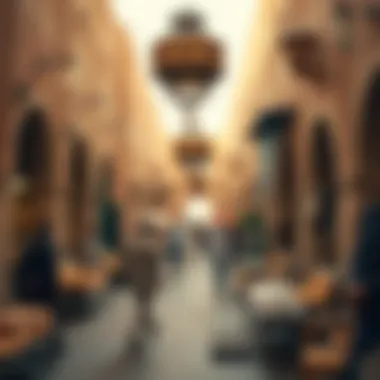
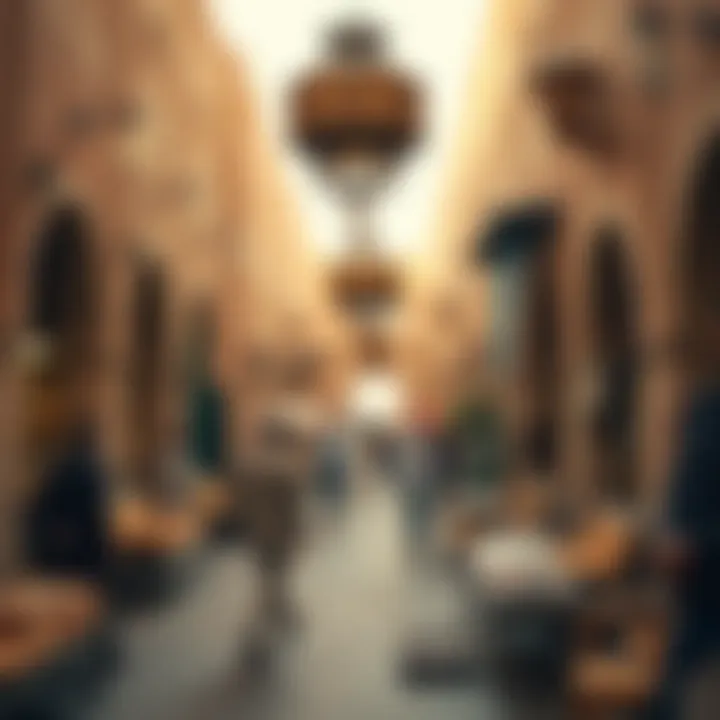
Attractive Prospects for Investors
Souk Al Marfa is more than just a market; it’s a burgeoning hub for both buyers and sellers, making it a sweet spot for financially-savvy investors. A few reasons why investing here is wise include:
- Diverse Market Segments: With a blend of local artisans, international brands, and culinary delights, the demographic appeal is broad. This attracts not only Emiratis but also expatriates and tourists alike.
- Propitious Growth Forecast: The ongoing urban expansion in Dubai, paired with expo-related growth factors, indicates a bullish trend on property values in and around the souk.
- Networking Opportunities: The souk serves as a melting pot for like-minded individuals, providing opportunities for partnerships or collaborations that can yield long-term achievements.
- Cultural Connection: Investing in this area enables one to be part of a project that prioritizes the preservation of Emirati heritage while still integrating modern market dynamics. This balance appeals to international investors looking to blend cultural respect with business.
"Investment in Souk Al Marfa is not just about profit; it's about being a part of something greater in the heart of a global city."
These aspects make Souk Al Marfa an investment possibility worth careful consideration. It's not merely about the financial aspect but also about participating in a transformative, community-oriented vision.
Tourism Impact on Souk Al Marfa
Tourism significantly shapes the fabric of Souk Al Marfa, acting as a catalyst for economic vitality and community interaction. As a focal point in the Deira Islands, the souk attracts a lively mix of visitors, blending locals with tourists from diverse backgrounds. Understanding the impact of tourism here requires a closer look at the dynamics of visitor demographics and nearby attractions that enhance the overall experience.
Visitor Demographics
The profile of visitors to Souk Al Marfa is as varied as the goods sold within its walls. Many visitors are expatriates seeking a taste of authentic Emirati culture, while others are tourists drawn to Dubai’s vibrant market scene. A significant portion comprises young families exploring cultural offerings, alongside older generations interested in local crafts and culinary experiences.
Key demographics include:
- Expatriates: They often make up a substantial portion of the foot traffic, eager to connect with the local culture and purchase unique items.
- International Tourists: Visitors from Europe, Asia and North America come to experience traditional markets juxtaposed against Dubai's modernity.
- Local Residents: Many residents frequent the souk for its array of local produce and artisan products, contributing to a sense of community.
- Young Families: Parents seek a family-friendly environment where children can learn about local traditions while enjoying open spaces.
This mixed demographic makes the souk not only a marketplace but also a melting pot of cultures, fostering a unique social environment.
Tourist Attractions Nearby
The location of Souk Al Marfa is strategic, making it a hub for exploring nearby attractions. This intersection enhances its appeal and offers visitors more than just shopping opportunities.
Notable nearby attractions include:
- Dubai Creek: Just a short stroll away, the creek offers boat rides that provide a picturesque view of the city—a perfect way to connect with the history of Dubai.
- The Dubai Frame: This iconic structure provides panoramic views of both old and new Dubai, breaking up the market atmosphere with a reminder of the city's vast urban landscape.
- Al Seef District: Here, visitors can stroll along the waterfront, soaking in the blend of historical architecture and contemporary design while enjoying cafes and restaurants.
- Heritage Village: An opportunity for tourists to engage with traditional Emirati culture through crafts and performances.
In sum, the synergy between Souk Al Marfa and its surrounding attractions amplifies the tourist experience, encouraging longer stays and more frequent visits. Ultimately, the flourishing tourism that converges in this souk serves as a significant pillar of community identity, economic opportunity, and cultural exchange in Dubai.
Local Amenities Around Souk Al Marfa
In any bustling marketplace, like Souk Al Marfa, the surrounding amenities play a pivotal role in enhancing the overall experience for both residents and visitors. The integration of robust local amenities can significantly influence a person's decision to visit or engage with the market. In exploring the local amenities, it is essential to consider accessibility, transportation options, dining facilities, and accommodation—the lifeblood that sustains interactions within this vibrant hub.
Transport and Accessibility
Accessibility is key when it comes to attracting potential customers and tourists. Souk Al Marfa boasts well-planned transport links that ensure easy movement for its visitors. The proximity to major roads and public transport facilities greatly enhances its appeal.
- Metro Stations: The nearby metro stations connect various parts of Dubai, making it easier for people to reach the souk without the hassle of traffic.
- Bus Services: An efficient bus network operates routes that stop close to the market, offering another option for those looking to visit.
- Parking Facilities: Ample parking is available for those who prefer to drive. This feature can’t be overlooked, as convenient parking encourages more foot traffic.
Being well-connected not only boosts the market's profile but also makes it easier for local businesses to thrive. Visitors can pop in for a quick browse without worrying about how to get around. This ease translates into increased footfall and, ultimately, sales, a win-win for all involved.
Nearby Accommodation Options
A marketplace is often a gateway to various experiences, and having accommodation options nearby enriches the experience of visiting Souk Al Marfa. Plenty of choices are available, ensuring that everyone finds something that suits their needs.
- Hotels: A range of hotels, from luxurious to boutique, is present in the vicinity, allowing travelers to choose according to their preferences and budgets. The likes of Hilton Dubai Creek and Rove City Centre offer convenient stays along with modern amenities.
- Short-Term Rentals: For those looking for something a bit cozier, short-term rental apartments can provide a homier environment. Platforms like Airbnb list numerous options that cater to families or groups.
- Budget Stays: There are also budget-friendly hostels and guesthouses. This diversity ensures that all types of visitors, whether business travelers or families on vacation, have a place to rest their heads after a long day of exploring.
Accessibility and nearby accommodation options can dramatically influence market dynamics, making Souk Al Marfa an enticing place for tourists as well as residents.
"Traditionally, markets are not just about buying and selling; they are about community and livelihood. The amenities that surround these locations can solidify their status as community hubs."
The blend of transport accessibility and a variety of accommodation choices around Souk Al Marfa underlines its strategic position within Dubai's urban framework. With everything considered, it’s easy to see how the surrounding amenities extend the life and vibrancy of the souk itself.
Future Prospects of Deira Islands
The Deira Islands are not just a collection of real estate opportunities; they represent a significant evolution in Dubai's landscape. This transitional phase offers insight into what the future holds, not only for Souk Al Marfa but for the entirety of Deira. As developments unfold, various elements emerge, hinting at the potential for growth, innovation, and community integration. Investors, homeowners, and expatriates have much to watch for in this burgeoning area.
Urban Development Plans
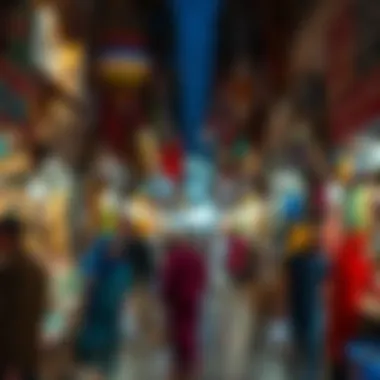

The urban development plans for Deira Islands are ambitious, aiming to blend modernity with the rich cultural tapestry of Dubai. Developers are focusing on creating mixed-use spaces that pulse with life, including residential units, commercial zones, and leisure spaces. This strategic approach aims to foster a vibrant, breathable urban environment that encourages social interaction.
Key elements of these development plans include:
- Green spaces: Planned parks and recreational areas are guaranteed to provide residents and visitors with relaxation and community spots amidst urban hustle.
- Transportation nodes: Enhancements in public transport infrastructure, such as integrated metro and bus services, aim to improve accessibility, making lifestyle seamless for residents.
- Smart city features: The integration of technology in urban planning, such as traffic management systems and energy-efficient buildings, shall deliver long-term benefits.
With these exciting initiatives underway, Deira Islands are positioned to become a hub for both locals and tourists, merging convenience with cultural authenticity. The developments not only aim to create spaces that are modern but also embrace the spirit of the emirate.
Expected Growth in Property Values
As development gains momentum, expected growth in property values stands out as a critical factor for potential investors. The sustained interest in the Deira Islands is likely to translate into profitability, as supply gradually shifts to meet increasing demand. Factors influencing property values include:
- Demand surge: As more people consider moving to Deira Islands, properties will be in high demand, driving prices upwards.
- Quality of amenities: The introduction of high-quality facilities—such as schools, healthcare centers, and commercial activities—enhances the area’s desirability.
- Investment incentives: The Dubai government offers several incentives to attract foreign investors, making the prospect even more lucrative.
It is anticipated that property values may rise significantly as these factors converge, reflecting an upward trajectory that benefits both individual investors and the overall market.
The Deira Islands are being reshaped into a cornerstone of Dubai's vision for the future, transformed through innovative development and a focus on community, commerce, and connectivity.
As one stands at the brink of this evolution, understanding the long-term implications of these urban developments is crucial. Not only for those looking to invest, but for anyone wishing to be part of a vibrant, flourishing community in the heart of Dubai.
Community Feedback and Experiences
Understanding community feedback and experiences is vital in shaping the future of Souk Al Marfa. Collecting insights from visitors and local businesses offers an invaluable perspective on how the souk functions as a cultural hub and economic marketplace. Feedback gives both stakeholders and developers critical information about what works and what doesn’t, facilitating improvements and innovations. It encourages community participation which can enhance the overall experience for everyone involved.
Surveys and interviews help gauge visitor satisfaction, but they also tell stories of individual experiences that reflect broader trends. Insights gleaned from this feedback can influence everything from the types of products offered to customer service approaches, ultimately enhancing the vibrancy of the Souk. Moreover, when local entrepreneurs share their experiences, it brings to light the challenges they face and the opportunities they see, creating a richer narrative around Souk Al Marfa.
"Listening to the voices of those who interact with Souk Al Marfa daily is the key to unlocking its potential."
Surveys on Visitor Satisfaction
Visitor satisfaction surveys play a significant role in understanding how well Souk Al Marfa meets the expectations of its diverse audience. These surveys can be both formal and informal—ranging from structured questionnaires at exit points to casual conversations with visitors enjoying their time in the souk. By employing a variety of approaches, the feedback collected can be multifaceted and revealing.
Key Elements of Visitor Surveys:
- Overall Experience: Visitors often express how they felt about the ambiance, variety of shops, and interaction with sellers.
- Service Quality: Comments about how staff interacted with them are crucial in identifying areas for improvement.
- Suggestions for Improvement: Feedback can detail what visitors wish to see, whether it’s more food options, information booths, or amenities like rest areas.
Encouraging visitors to participate in these surveys can help create a sense of ownership. When they see that their opinions are valued, they feel more connected to the destination. Continuous assessment through this feedback not only helps the management address pressing issues but also builds a positive reputation.
Local Business Perspectives
The sentiment from local business owners provides another layer of understanding about Souk Al Marfa. Their experiences paint a picture of the dynamic interplay between commerce and community. These perspectives highlight the vibrant entrepreneurial spirit that drives the souk, and can also illuminate the challenges they encounter, such as competition, customer flow, and economic factors.
Common Insights from Local Businesses:
- Customer Engagement: Many businesses note the importance of customer relationships and how repeat visits correlate with word-of-mouth recommendations.
- Collaboration Opportunities: Merchants often report collaborative events as a beneficial strategy, such as joint promotions during festive seasons or themed markets showcasing local crafts.
- Economic Challenges: Factors like rising rents or fluctuating tourist numbers can impact local enterprise viability, making it important for Souk management to consider support measures.
Understanding the local business perspective invites a deeper conversation about sustainability and growth within the souk. By fostering an environment where these businesses can thrive, Souk Al Marfa enhances its role as a community connector as well as a commercial epicenter in the heart of Deira Islands.
Comparative Analysis with Other Markets
In the realm of economic development and urban planning, understanding market dynamics is foundational. Analyzing Souk Al Marfa in the context of other markets provides valuable insights. This comparative analysis not only elucidates Souk Al Marfa’s unique attributes but also highlights its position amongst newer and traditional marketplaces in Dubai and beyond. With its modern approach to retail, dining, and community engagements, Souk Al Marfa emerges as a significant player that marries innovation with tradition.
Comparison with Traditional Souks
Traditional souks in Dubai, such as the Gold Souk or Spice Souk, have long been the heartbeat of the region's commerce. These vibrant marketplaces are characterized by their historical significance and the artisan touch seen in local crafts. The tactile experience of negotiating prices and the rich aromas wafting through the air create a unique atmosphere that attracts both tourists and locals alike.
Yet, when comparing Souk Al Marfa, it stands apart boasting a contemporary design and a variety of offerings that somewhat eclipses the traditional experience. For instance, while traditional souks often focus heavily on specific goods—jewelry, spices, or textiles—Souk Al Marfa provides a holistic experience. It features a blend of retail, dining, and experiential hubs under one roof, catering to a diverse demographic that includes families, young professionals, and expatriates.
- Ambience Differences: Traditional souks often retain a chaotic charm, whereas Souk Al Marfa offers an organized layout that enhances customer experience.
- Product Range: Souk Al Marfa presents a mix of local and international brands, contrasting the niche focus of traditional markets.
- Accessibility and Amenities: With modern amenities such as wifi enabled lounges and air conditioning, Souk Al Marfa ensures convenience, appealing to contemporary consumer preferences.
Evaluating Competitive Venues
When considering investment opportunities, evaluating competitive venues is crucial. Souk Al Marfa isn't just competing with traditional souks; it's also standing toe-to-toe with shopping malls and commercial areas like The Dubai Mall and Mall of the Emirates. These contemporary venues draw significant foot traffic, offering an array of global brands, dining options, and entertainment choices.
However, Souk Al Marfa distinguishes itself by fostering a sense of community and cultural authenticity that larger malls may lack. Patrons are not merely shopping but engaging with local artisans and participating in cultural events. This unique aspect gives it a competitive edge.
- Cultural Experience: Unlike many commercial centers that focus primarily on retail, Souk Al Marfa integrates cultural activities, workshops, and artisan showcases, making it more than just a shopping destination.
- Visitor Engagement: The competitive venues often miss the intimate experiences that Souk Al Marfa offers, like local events and community markets, which can boost visitor loyalty.
- Investment Appeal: Understanding these comparative aspects can guide investors looking for unique opportunities in a rapidly evolving market. The mixed usability of Souk Al Marfa could attract investments focusing on both retail and experiential offerings.
By weighing the distinct features and market positioning of Souk Al Marfa against traditional souks and shopping malls, stakeholders can better understand its contribution to Dubai’s economic landscape and cultural richness.
Through this analysis, it's clear that Souk Al Marfa serves a multifaceted role, providing a compete offering not only for shoppers but also for investors keen on capitalizing on Dubai's burgeoning market dynamics.
